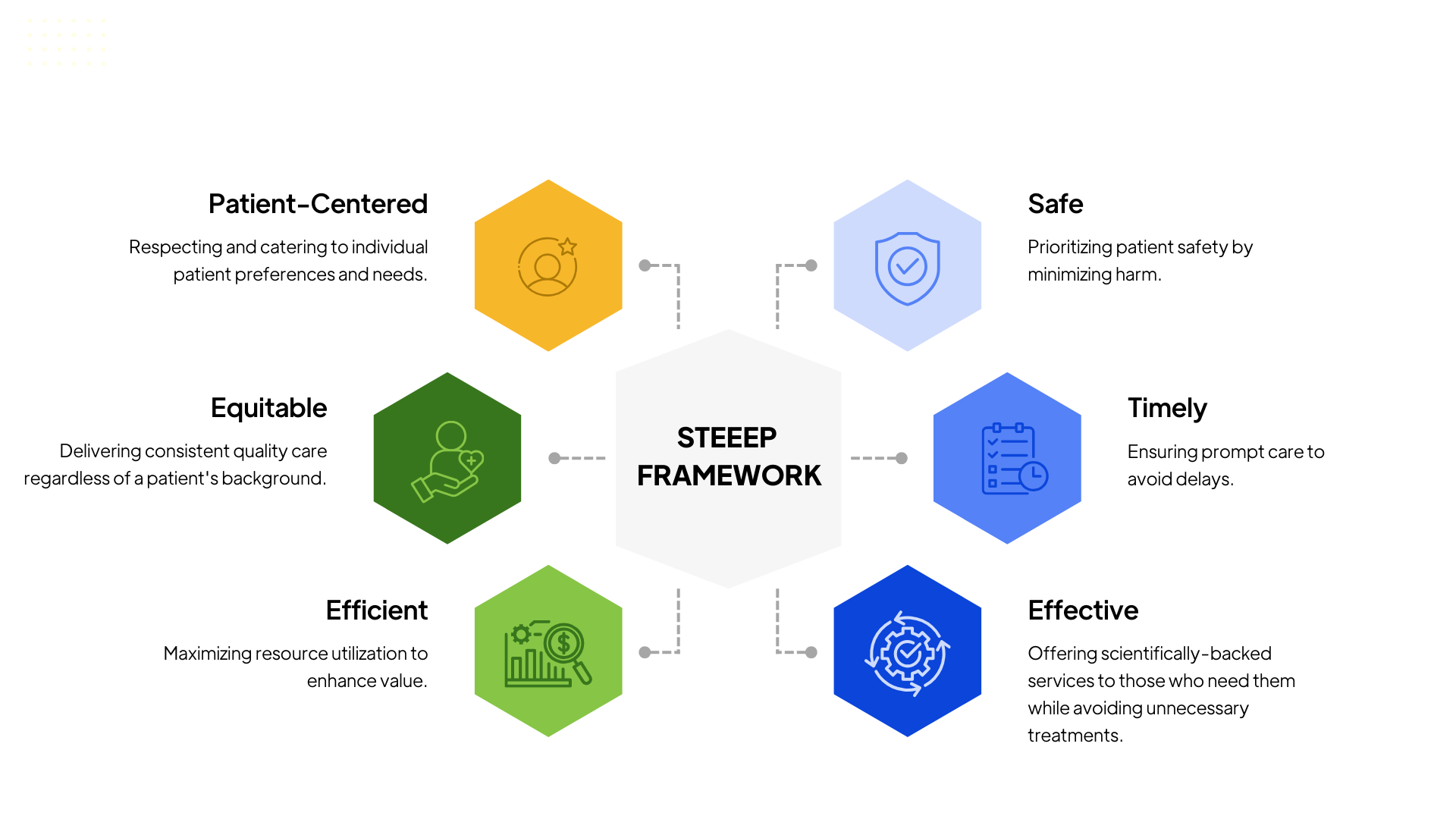The shift from traditional fee-for-service to value-based care represents a profound change in healthcare, focusing on delivering high-quality care while managing costs effectively. This transition is challenging but deeply rewarding, particularly through the lens of the STEEEP framework. Originally developed by Baylor Scott & White Health and trademarked by Baylor Health Care System in 2001, STEEEP stands for Safe, Timely, Effective, Efficient, Equitable, and Patient-centered care—each element vital to improving healthcare standards.
The history and fundamentals of STEEEP

STEEEP emerged as a response to the growing need for quality improvement in healthcare. It underscores the significance of addressing various aspects of patient care, ranging from safety to efficiency. Each component of the acronym represents a distinct yet interconnected aim:
- Safe: Prioritizing patient safety by minimizing harm.
- Timely: Ensuring prompt care to avoid delays.
- Effective: Offering scientifically-backed services to those who need them while avoiding unnecessary treatments.
- Efficient: Maximizing resource utilization to enhance value.
- Equitable: Delivering consistent quality care regardless of a patient's background.
- Patient-centered: Respecting and catering to individual patient preferences and needs.
These principles guide everyday healthcare delivery, turning abstract goals into practical outcomes.
The critical role of STEEEP in value-based care
Enhancing patient safety and satisfaction
In value-based care, patient outcomes are paramount. STEEEP’s emphasis on safety and patient-centeredness ensures that care delivery is not only effective but also aligns with what patients deem important. This alignment increases patient satisfaction, a key metric in value-based care models.
Driving down costs
Efficient and effective care, as advocated by STEEEP, directly contributes to cost reduction. By focusing on necessary and scientifically supported treatments and optimizing resource use, healthcare systems can deliver quality care at lower costs. This efficiency is a cornerstone of value-based care, which rewards cost-effective healthcare delivery.
Ensuring equity
STEEEP also champions equity in healthcare, ensuring that every patient receives the same quality of care, irrespective of their background. This commitment to inclusivity not only meets ethical standards but also supports the broader value-based care goals of enhancing health outcomes for all demographics.
Timeliness and its impact on outcomes
Providing timely care is crucial for preventing health complications and managing conditions effectively. In value-based care, reducing wait times and preventing delays can lead to improved health outcomes and lower healthcare costs by avoiding the need for more complex, costly treatments.
Stepping into the shoes of healthcare professionals
For healthcare providers, especially nurses, embracing STEEEP means adopting a comprehensive approach to patient care. Every decision and action must align with these six principles to ensure healthcare delivery is not only effective but also equitable and patient-centered. This alignment is essential in value-based care, positioning healthcare professionals as crucial contributors to both patient well-being and the cost-effectiveness of care.
Overcoming the challenges of implementing STEEEP
Implementing the STEEEP framework in clinical practice is not without its hurdles, which can include resistance to change and the inherent complexities of healthcare systems. Strategies for overcoming these challenges include:
- Education and training: Continually developing professional skills in STEEEP principles.
- Leadership and culture: Building a workplace culture that embraces these principles under strong leadership.
- Patient engagement: Involving patients actively in their care decisions and respecting their individual preferences.
- Technology and innovation: Leveraging technology to enhance the efficiency, safety, and effectiveness of care.
- Policy and governance: Establishing policies that enforce adherence to STEEEP principles.
A STEEEP but rewarding path forward
The journey toward value-based care is indeed steep, but the STEEEP framework equips us with a robust guide to navigating this challenging yet vital transition. By focusing on delivering care that is safe, timely, effective, efficient, equitable, and centered around the patient, healthcare professionals can align their practices with the core objectives of value-based care.
For those of us in healthcare, particularly in the U.S., adopting STEEEP is more than a regulatory requirement—it is a commitment to excellence and a testament to our dedication to improving patient care by embracing and accelerating innovation in value-based care.

.png?width=1000&height=700&name=recommendation%20(1).png)



